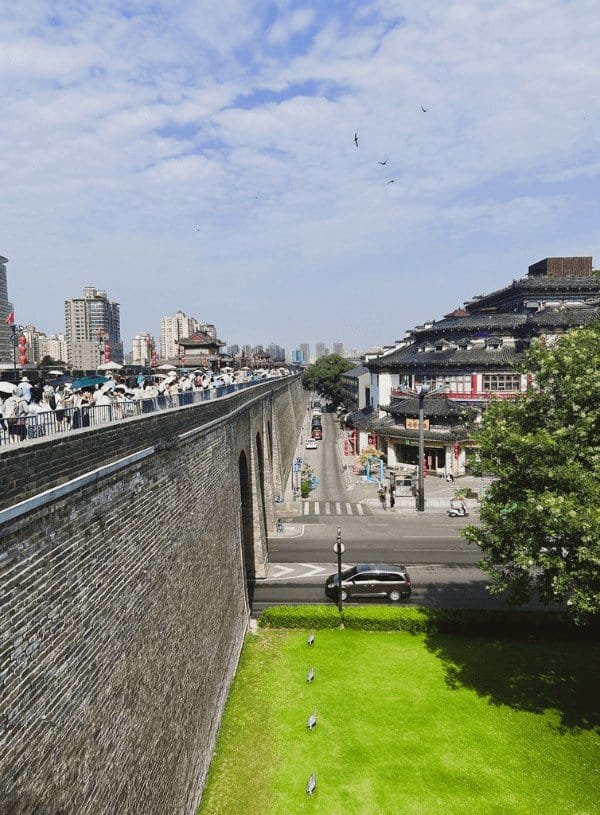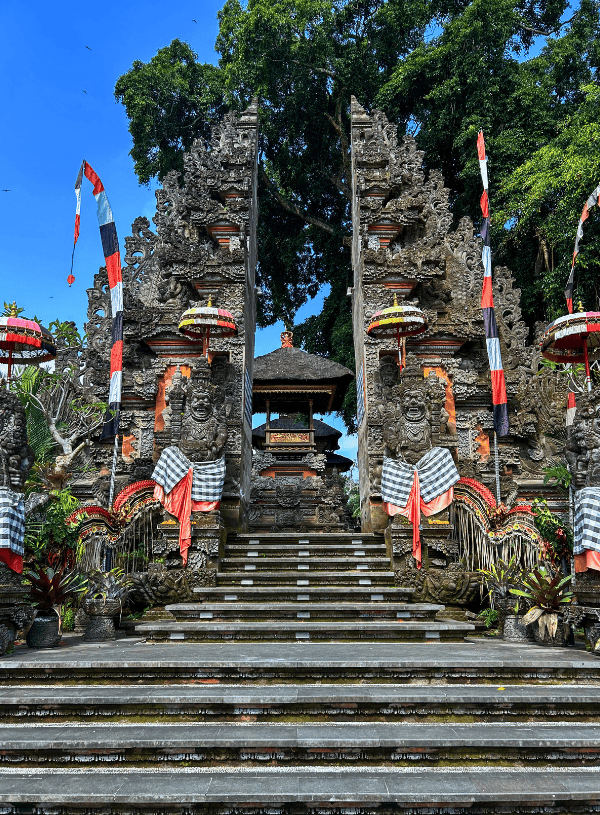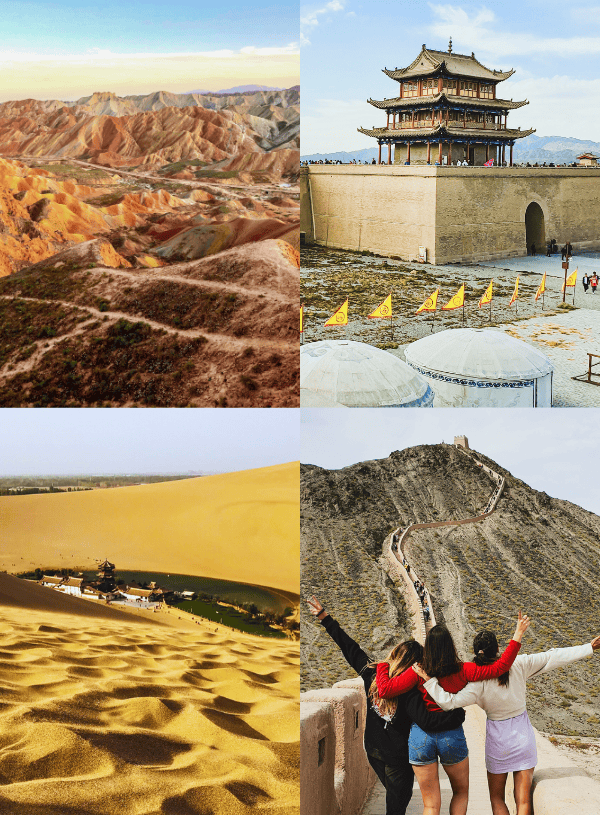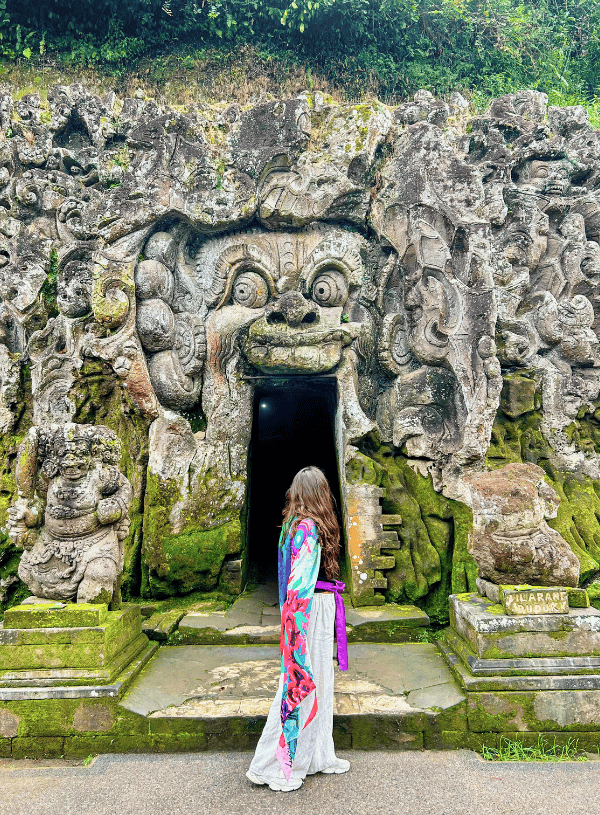One Day in Ubud: Two Itineraries for Every Kind of Traveler
Last Updated on October 17, 2025
Ubud, in the heart of Bali, is often considered the island’s artistic and spiritual soul. If you’re visiting Bali for the first time, you can’t miss it—even if you only have one day.
One day in Ubud won’t show you everything, but it’s enough to experience Ubud’s real beauty: infinite rice fields, stunning water temples, and its spiritual atmosphere that often gets lost in Bali’s busier spots.
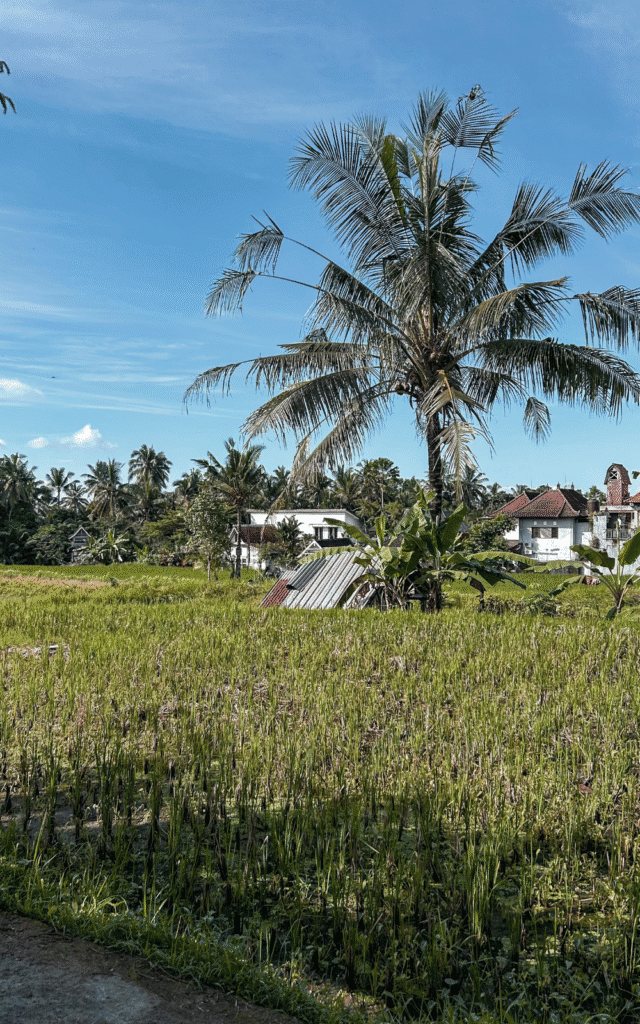
Yes, Ubud is touristy, and it can feel chaotic at times. But after living here for a while, I’ve realized there are two ways to explore it:
- Stick to the tourist spots (worth seeing, but crowded), or..
- Choose lesser-known places that are just as beautiful, but far more peaceful and authentic.
In this post, I’m sharing two Ubud itineraries for every kind of traveler—from must-sees to hidden gems.
This article may contain affiliate links. This means that if you purchase through one of the links, I may be paid a small commission at no extra cost to you. Thank you for supporting the blog and allowing me to keep sharing meaningful travel experiences with you.
Don’t have time now?📌 Save it for later!
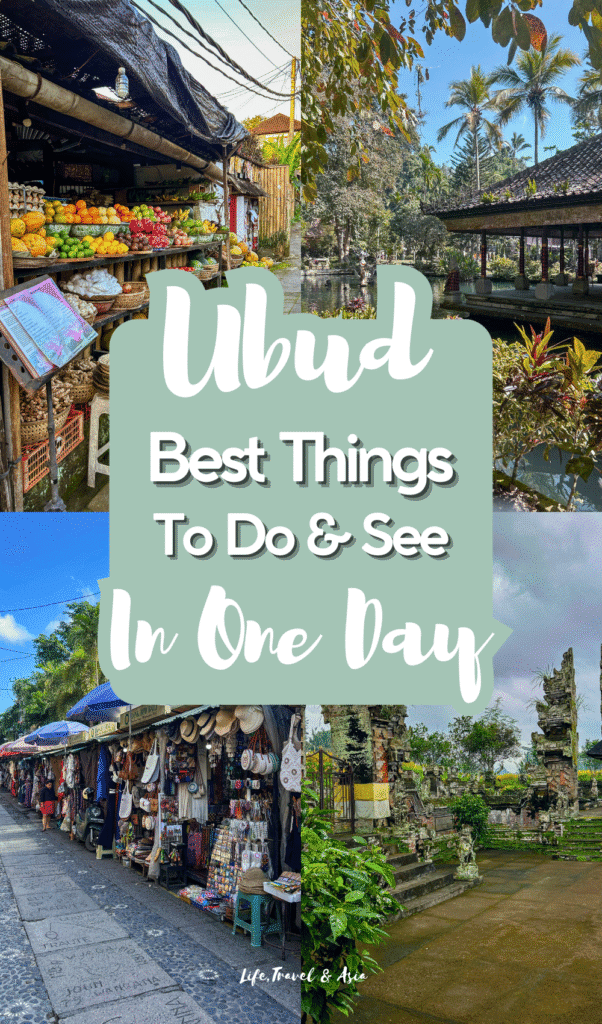
How To Plan This Itinerary: Getting Around in Ubud
Depending on your plans, you may choose to spend the night in Ubud and start your itinerary early the next morning, or visit for the day, arriving early and departing in the evening.
Either way, for the first part of your itinerary — visiting rice terraces, water temples, and waterfalls — you’ll need a driver, as these sights are located about 30–40 minutes north of Ubud.
To move around these sights, here are your options:
- Grab or Gojek: This is how I’ve handled most of my day trips. If you’re traveling solo, it’s usually easy to meet a driver in the morning and ask if they’re available to take you to a few nearby spots. If you’re looking for a trustworthy driver, leave a comment — I’d be happy to share the contact information of the driver I usually contact.
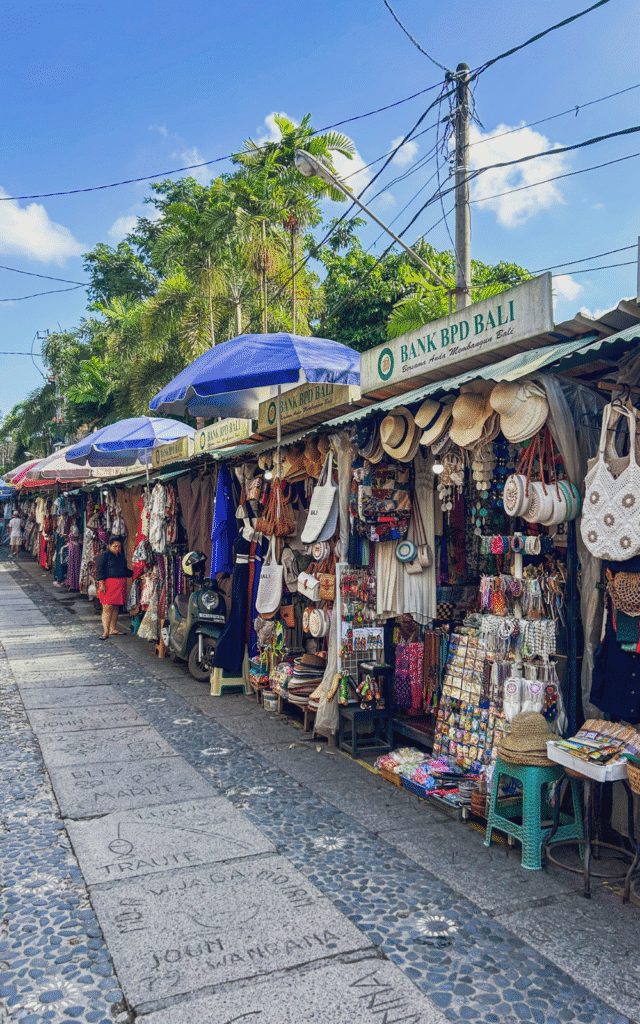
- Pre-book a car service: If you’re with friends, booking a car service for a few hours might be your best bet. You can pre-book your ride here for the most hassle-free experience. Just keep in mind that returning to Ubud may take longer due to mid-morning traffic.
- Rent a scooter: If you’re comfortable driving in Bali, renting a scooter is a great option. It provides you with plenty of flexibility in terms of timing and itinerary. You can look into Ubud Scooter Rental.
For the second part of the itinerary, you’ll be exploring the central area of Ubud, where most sights are within walking distance. You might only need to call a Grab if you’re heading to a sunset spot near the rice fields.
Are you planning a short stay in Ubud and looking for an easy way to explore the town on foot? Here’s my favorite walking itinerary to really experience Ubud.

Ubud One-Day Itinerary #1: The Classic Ubud Tour
This itinerary covers all the major sights that most first-time visitors to Ubud don’t want to miss. Some of them are true must-sees—especially if you’re not sure you’ll be back in Bali anytime soon.
For each stop, I’ll share my honest take along with tips to help you make the most of your visit, even in the middle of the crowds.
1. Tegalalang Rice Terraces
🕘 Opening hours: 7:00 AM – 6:00 PM (you can technically enter even earlier). You can spend around 1 to 1.5 hours here.
💰 Ticket price: 50K IDR
Located about 15 minutes north of Ubud, Tegalalang Rice Terraces are the most famous—and definitely the most photographed—rice fields in Bali.
If it’s your first time seeing rice terraces and you’re not planning to head north to Jatiluwih (the UNESCO-listed ones), then this is a must-stop.

That said, I’ll be honest—I had some doubts about visiting, and unfortunately, they were confirmed. The area feels very touristy: no farmers are working the fields, just a lot of staged photo ops and, of course, queues for the iconic Bali swing.
To avoid the crowds, consider arriving as early as possible. I visited around 7:00 AM, and it was very quiet, with just a few other travelers.

The crowds start pouring in around 9–10 AM. If you do arrive later, head to the other side of the hill—most people don’t climb that far, and it offers a much more peaceful atmosphere and better views.
Here, you have an honest review of my experience at Tegalalang Rice Terraces: what I liked, what I didn’t, and a glimpse of Jatiluwih, if you’re planning to head north.
Tip for Your Visit
Bring a towel, insect repellent, and comfortable shoes if you plan on walking around. It gets very humid, and mosquitoes are no joke here.
2. Pura Tirta Empul
🕘 Opening hours: 8:00 AM – 6:00 PM. You can visit the temple in around 30 minutes. You’ll need an hour if you perform the ritual here.
💰 Ticket price: 75K IDR
Pura Tirta Empul is the most famous water temple near Ubud. Its holy spring is believed to have purifying powers, and that’s why many first-time visitors come here to take part in the Melukat, the traditional Balinese water purification ritual.
Here’s my honest take: I loved the temple itself. If you walk past the outer courtyard—the part with the pools where the ritual takes place—and head into the inner courtyard, the atmosphere completely changes.

It’s peaceful, spiritual, and, surprisingly, almost empty. Most visitors stop at the ritual pools and never venture further.
Architecturally, Tirta Empul is one of the largest and most impressive temples in the Ubud area. But while the ritual is the main attraction here, I wouldn’t recommend doing it at this location.
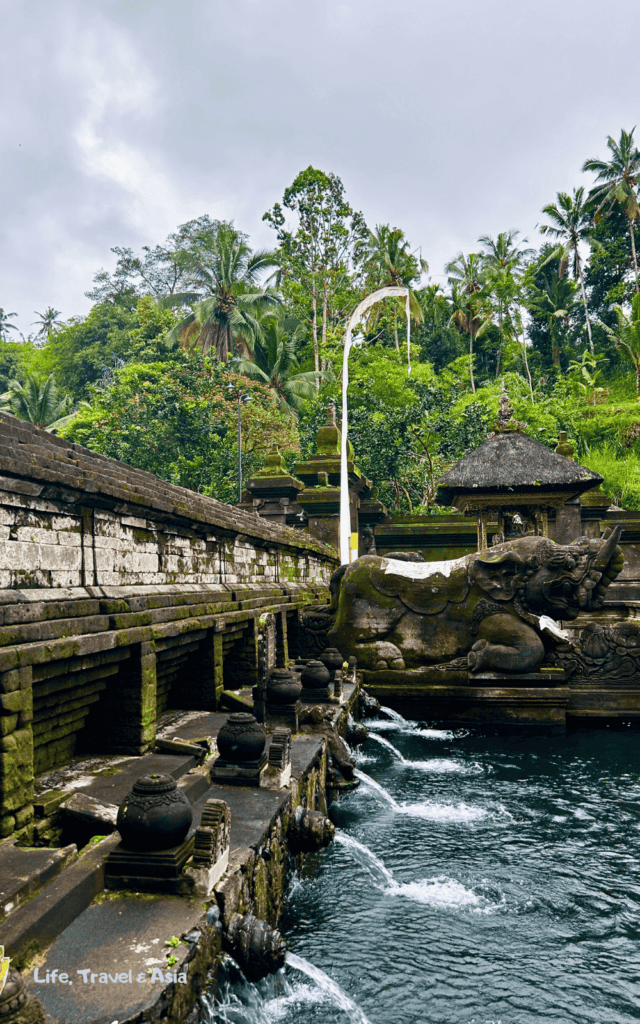
It felt too chaotic and staged, marketed as a spiritual experience, but surrounded by selfie sticks and tourists. When I visited, I didn’t see a single local taking part in the ritual.
Most people don’t realize there are other, more meaningful places to experience this ceremony. And if you’re curious—stay with me. In the second itinerary, I’ll share two alternative temples where you can have a more personal and peaceful ritual experience.
I’ve written a dedicated blog post about my first visit to Tirta Empul, where I was supposed to do the ritual, but ended up not going through with it.
That said, if you’ve been dreaming of experiencing the ritual here, wearing the classic bright green sarong and stepping into the holy springs, here’s one of the top-rated experiences you can book. If I were you, I would book the first slot available at 8:30 am. A local guide will take you through the meaning of the ritual and the proper way to perform it.
Tip for The Ritual
The water is usually cold, so I’d recommend having something light for breakfast or leaving enough time in between to avoid feeling sick. Don’t forget to bring a towel, a change of clothes, a swimsuit, and flip-flops for the ritual.
3. Sacred Monkey Forest
🕘 Opening hours: 9:00 AM – 5:00 PM
💰 Ticket price: 100K IDR on weekdays, 120K IDR on weekends
The Monkey Forest is one of the most fun and fascinating sights to explore in Ubud.
Watching the monkeys go about their day is oddly exhilarating—they act like tiny humans, taking care of their babies, fighting over coconuts, or engaging in what appear to be serious family discussions.

It’s also one of the busiest attractions in town, and where visitors often spend the most time.
However, if you stay away from the entrance area (which feels a bit like a theme park) and walk deeper into the forest, you’ll find quieter areas, calmer monkeys, and fewer people.
Don’t miss the three temples inside the forest grounds, which give the Monkey Forest its sacred status:
- Pura Dalem Agung Padangtegal
- Pura Beji
- Pura Prajapati
You can’t go inside the temples, but they’re still worth seeing from the outside.
Tip Your Visit
Avoid staring monkeys in the eyes, wearing loose accessories, carrying food, or exposing your phone or sunglasses—these monkeys are curious and not shy about grabbing whatever catches their attention!
4. Where to Eat Close to The Monkey Forest
Here are a couple of my favorite spots for lunch nearby:
Warung Gauri – This hidden gem (literally hidden) is right on Jl. Bisma, just off Monkey Forest Road. They have all the Indonesian classics, some incredibly filling rice bowls, and lately, they’ve added a whole avocado-themed menu, which I love.

Blend Cafe & Bistrot – Just behind the Monkey Forest, Blend Cafe is so popular for its smoothie bowls, which are true works of art (and taste amazing). They also have a full lunch menu. It’s more expensive compared to a warung, but it’s so worth it.
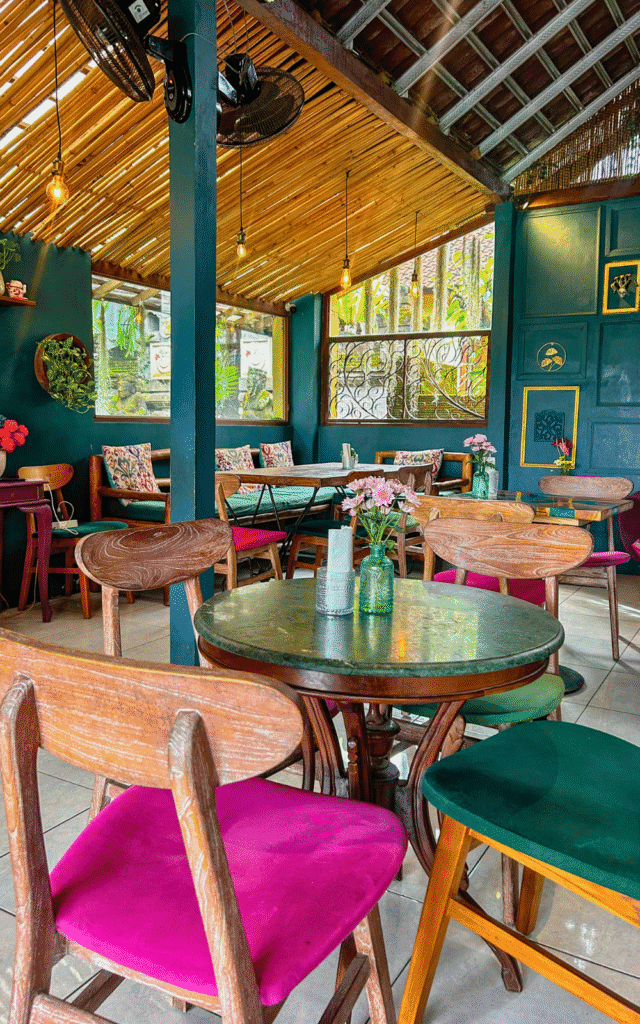
Looking for Places to Eat in Ubud? Here Are My Favorite Restaurants, Cafes & Warungs
5. Ubud Palace & Saraswati Temple
🕘 Opening hours: 8:00 AM – 6:00 PM
💰 Ticket price: Ubud Palace is free, Saraswati Temple is IDR 60,000
Both the Ubud Palace and Saraswati Temple are quick stops—you’ll be done in under an hour. They’re nice spots to pass by if you’re in the area.

At the Ubud Palace (Puri Saren Agung), you’ll find peaceful courtyards (depending on the time of day), beautifully carved red sandstone gates, and classic Balinese architecture. It’s small but charming.
The Saraswati Temple, also known as the Water Temple, is somewhat misleading—you can’t go inside the temple.
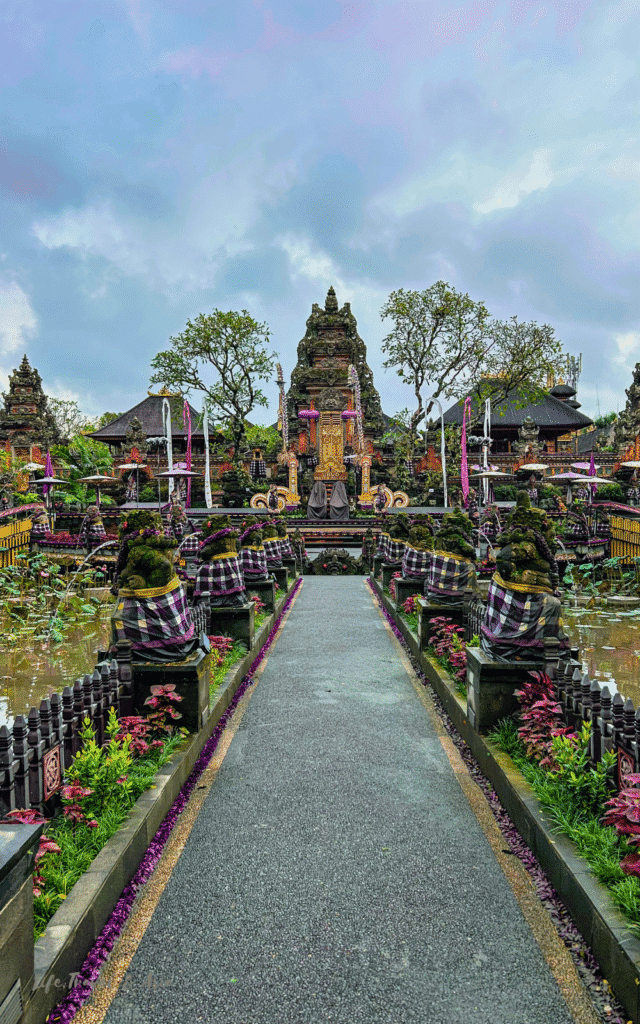
What you can explore is a dreamy little garden with a lotus pond, fountains, and tropical plants. It’s very picturesque, even if I think the entrance fee is a bit much for what you get.
6. Ubud Market
I’ll be honest — I don’t hang around the Ubud Market area much. It’s always way too busy for me, no matter the time of year.
But if you’re visiting Ubud for your holidays and want to bring back some souvenirs, this is the place to look.
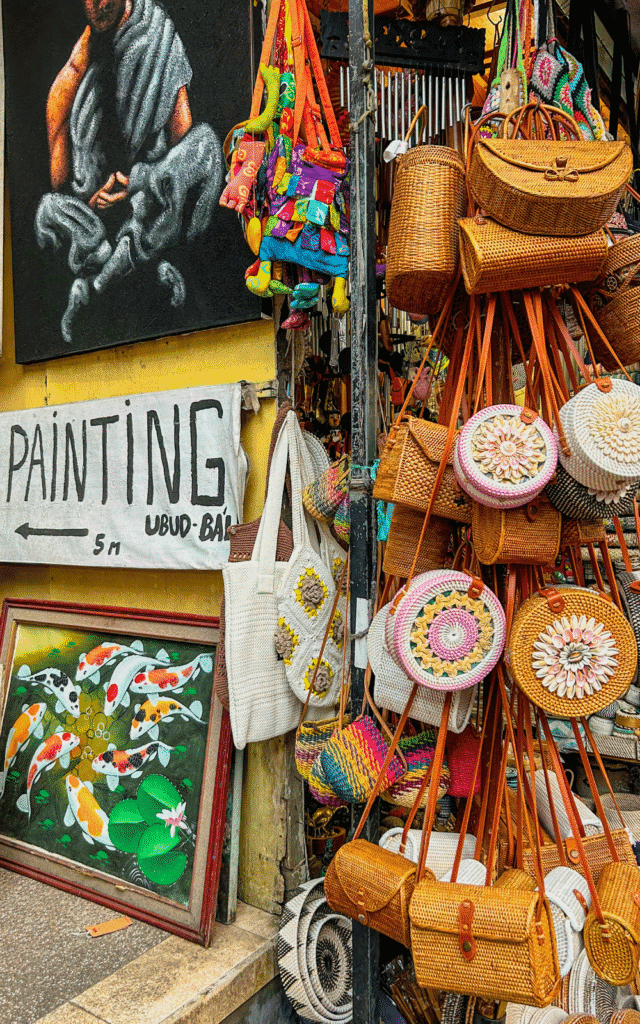
The market itself is a labyrinth. There’s a fresh produce section with fruits and vegetables, and a souvenir section packed with crochet Bali bags, magnets, sarongs, wooden carvings, incense holders, and every quirky Balinese find you can imagine.
You can start your exploration right in front of Ubud Palace, then head deeper into the busy alleyways — that’s where the absolute chaos begins.
6. Rice Fields & Walking Trails
When it comes to rice fields and walking trails surrounding Ubud, you have plenty of options—from the more well-known like the Campuhan Ridge Walk to lesser-known ones without an actual name.
I highly recommend stopping by the Campuhan Ridge Walk to visit Pura Gunung Lebah, which, to me, is one of the most magical sights in Ubud (unfortunately, it’s rarely open to visitors).
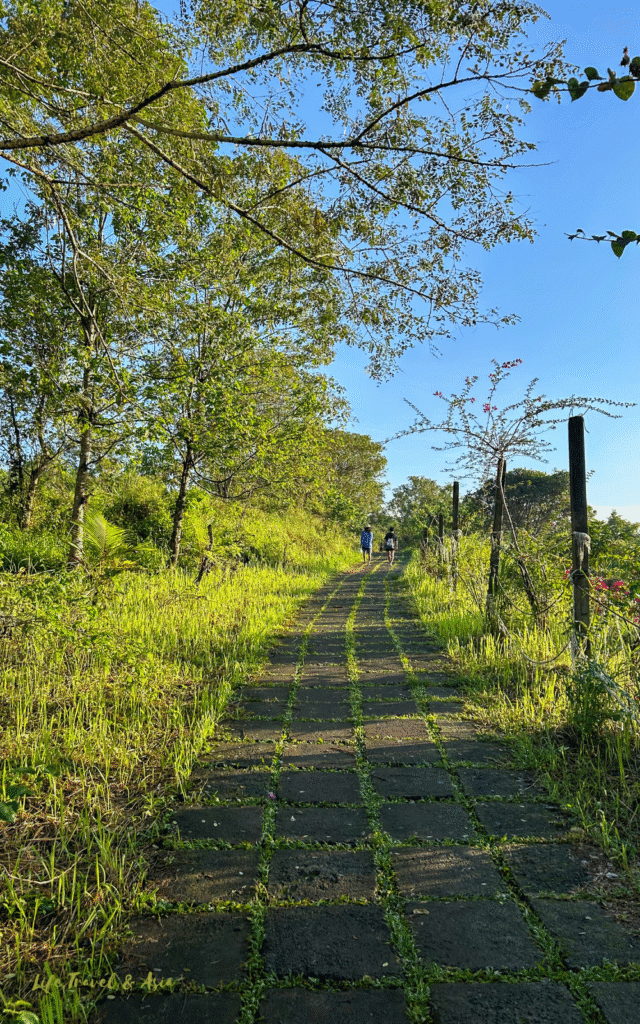
If you’re looking for surreal rice field landscapes, quirky art shops, and cafés with rice terrace views, head to Kajeng Rice Fields, the Sweet Orange Trail (Juwuk Manis Walk), or the Sari Organik Walk.
These walking trails offer that peaceful silence I always crave when the main road feels like too much.
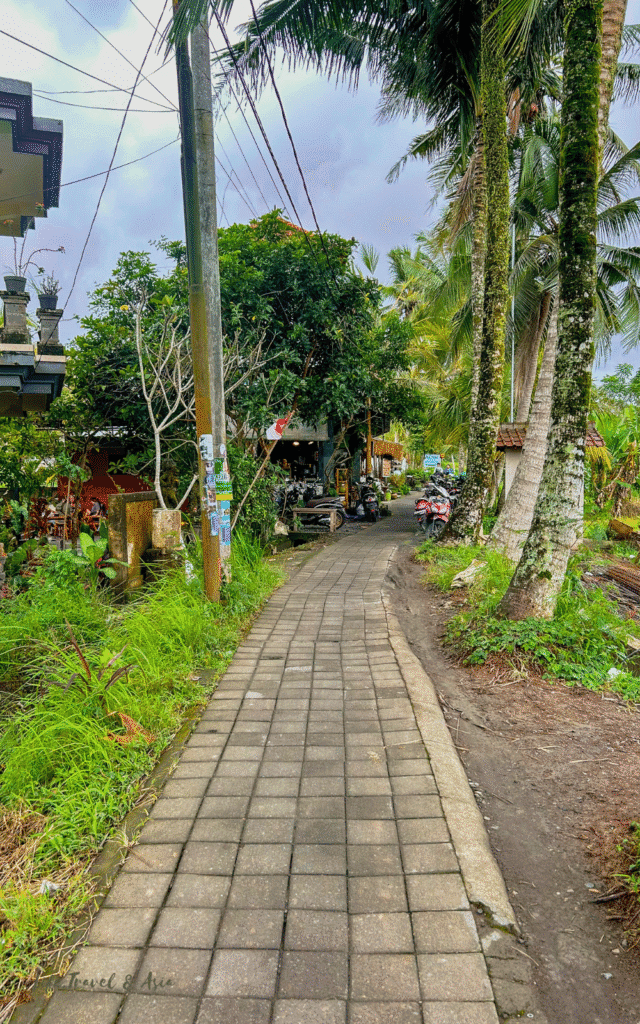
You’ll find more hidden walking trails like these in my Ubud Rice Field Walks guide.
7. My Favorite Ubud Warungs For Dinner
There are a couple of spots I keep coming back to, especially for dinner:
Nikuna Warung – Restaurant atmosphere but Warung prices. It’s a tourist favorite, and for good reason: the portions are generous and the food is seriously delicious. If you’re more than two, I recommend going early—I’ve often seen people being told to wait because there were no seats left.
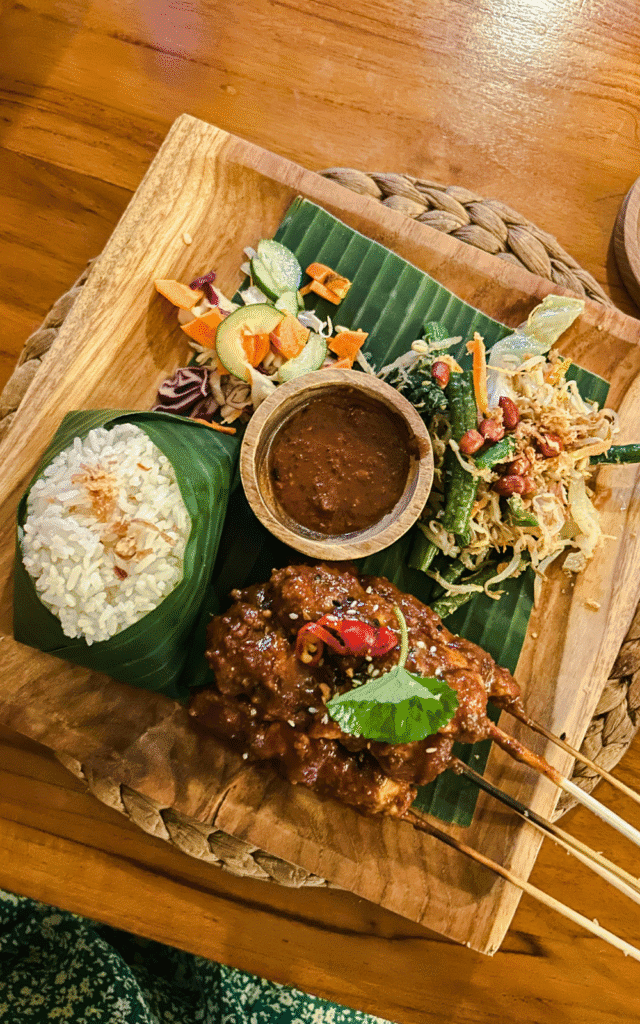
Sun Sun Warung – Right in front of Nikuna, but much less popular. Again, it feels like a restaurant but with Warung prices. The food is great, and it honestly feels like a fancy spot, while being super affordable.

Compound Warung – The earlier you go, the shorter the wait, because here, waiting in front of the entrance is normal. This place is special because the prices are even lower than average, yet the quality remains amazing.
Looking for more Warungs in Ubud? Here Are Top Picks!
8. Balinese Dance Performance
If you’re around Ubud at 7 PM, you might want to take the chance to attend a Balinese dance performance.
In Ubud, these events typically take place at the Ubud Palace, Saraswati Temple, and Pura Dalem Ubud, located at the very end of Jalan Raya and somewhat less obvious as a choice.
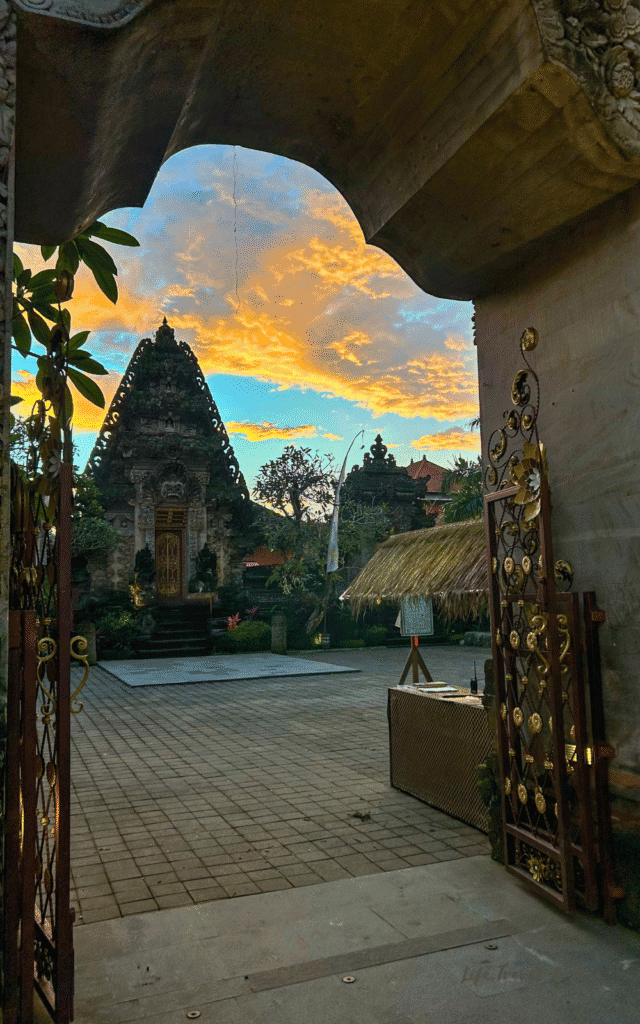
You can choose the performance based on what you’re interested in: the most popular ones are the Legong Dance (a graceful dance performed by young Balinese girls) and the Kecak Fire Dance (which features a large group of male performers chanting and moving in rhythm).
To buy a ticket, just walk along the main road around 6 PM — it won’t be hard to spot a local Balinese vendor selling them.
Best Ubud One-Day Tours
Itinerary 1 includes the typical stops of all one-day tours in Ubud.
If you want to avoid the burden of organizing transportation but still benefit from a local guide explaining the history behind each place (which is extremely interesting), you can book one of the tours below.
Ubud All-Inclusive Tour: This tour covers all the main sights mentioned above: the Monkey Forest, Ubud Palace, the Art Market, Tegalalang Rice Terraces, and Tirta Empul, and wraps up the day with a stop at Tegenungan Waterfall. Pick-up and drop-off are both included.
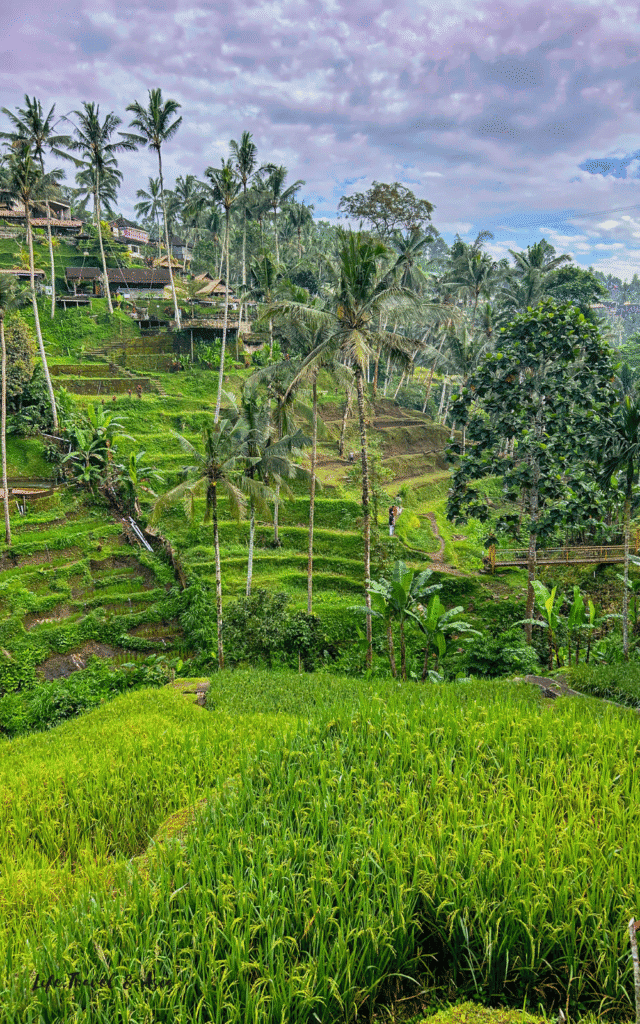
All-Inclusive Ubud Private Tour: This tour includes some of the main sights like the Monkey Forest, Tegalalang, Tirta Empul, and Tegenungan Waterfall — but it starts the day with a special visit to a traditional Balinese home compound, where you’ll learn all about one of the core concepts of Balinese living: Tri Hita Karana.

Ubud One-Day Itinerary #2: The One I’d Take a Friend On
After living in Ubud for a while, I’ve been lucky enough to explore beyond the main tourist spots—and this is the exact itinerary I’d take a friend on.
1. Purification Ritual at Pura Mengening
🕘 Opening hours: 8:00 AM – 5:00 PM
💰 Ticket price: 30K IDR (if you just visit, without performing the ritual)
Do you remember when I told you about the two other possible locations to experience the Melukat ritual?
Pura Mengening is one of them, and the water temple where I practiced my very first Melukat, just a week after moving to Ubud.
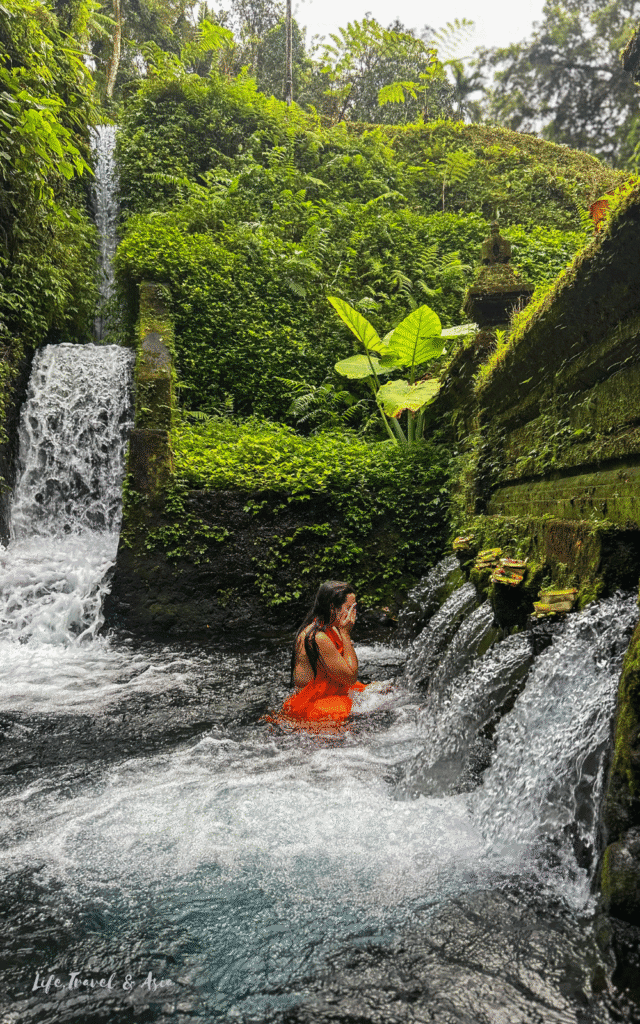
Pura Mengening is located near Tirta Empul, but it has an entirely different vibe.
Here, the atmosphere is calm and spiritual. Everything is quiet, and the few Balinese people who come here are practicing the ritual themselves.
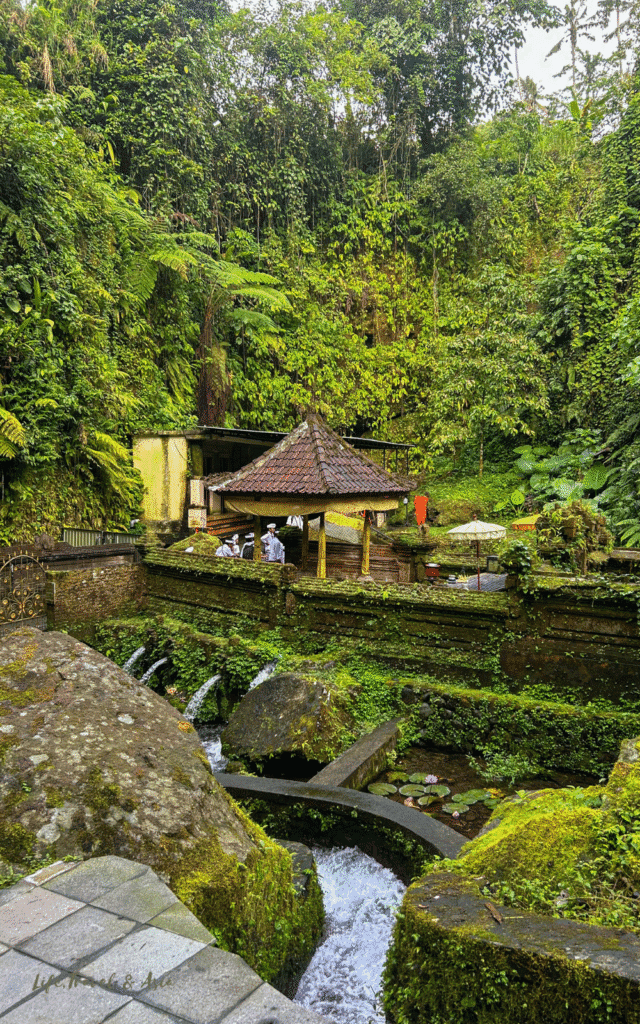
It was 8 AM when I arrived, and in front of me was a staircase lined with pools where the holy spring water flowed, koi fish ponds, and further ahead, tucked into the valley, the natural pools where the ritual takes place.
The temple, with its sacred courtyards and gates, sits above a staircase.

Unfortunately, the temple itself can’t be visited—you can only walk up and look at it from the outside.
But the beauty of the entire site, almost as if it were born from the valley and surrounded by jungle, more than makes up for it.
Here’s everything about my unforgettable Purification Ceremony — and if you’d like to book the same experience, you can do it through this link. If you book the ritual, the entrance ticket is included.
2. Gunung Kawi Sebatu
🕘 Opening hours: 8:00 AM – 6:00 PM
💰 Ticket price: 50K IDR
Gunung Kawi Sebatu is probably the most beautiful and architecturally charming water temple I’ve seen so far.
It’s small, but you’ll easily spend over an hour wandering around, taking in the details, and snapping photos.

The crystal-clear pools and lush tropical gardens (which I’m obsessed with) were already enough to make me whisper Wow from the back of my Grab bike when I arrived.
The temple follows the traditional Hindu Balinese layout, with three courtyards representing the outer world, the middle world, and the innermost sacred space.

It’s also a peaceful spot to practice the Melukat ritual. I saw a family doing it during my visit, and it was a truly wholesome and beautiful moment to witness.
If you’re curious to explore this site and want to know what to expect, here’s everything about my visit to Gunung Kawi Sebatu.
And if, after taking in the beauty of its grounds, you feel like it’s the right place for your Melukat, you can book it through this link.
3. Suwat or Taman Sari Waterfall
To me, an Ubud itinerary isn’t complete without a waterfall moment.
Suwat and Taman Sari are two stunning falls that are easy to reach but not nearly as crowded as Tegenungan or Kanto Lampo.
Even if you visit mid-morning, you likely won’t find queues of tourists waiting for the perfect Instagram shot.
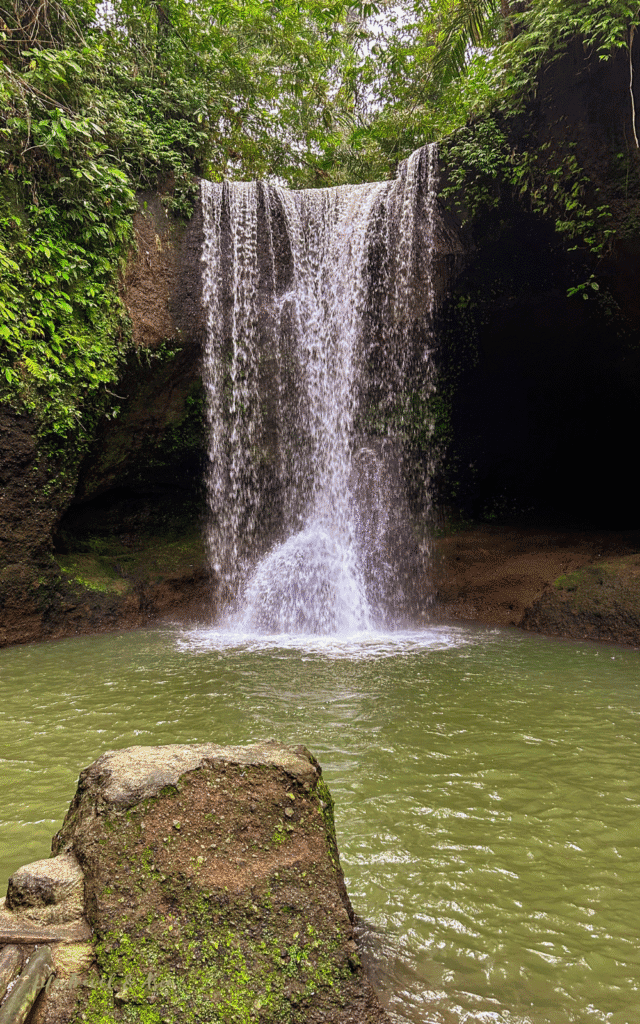
If you were hoping to visit Tibumana but are put off by the crowds, Suwat is quite similar in structure: a single waterfall cascading into a pool. You can swim here, though the ground is a bit uneven.
That’s why I think Taman Sari is better for swimming.
It’s honestly stunning and probably my favorite waterfall from my waterfall-hopping day around Ubud.
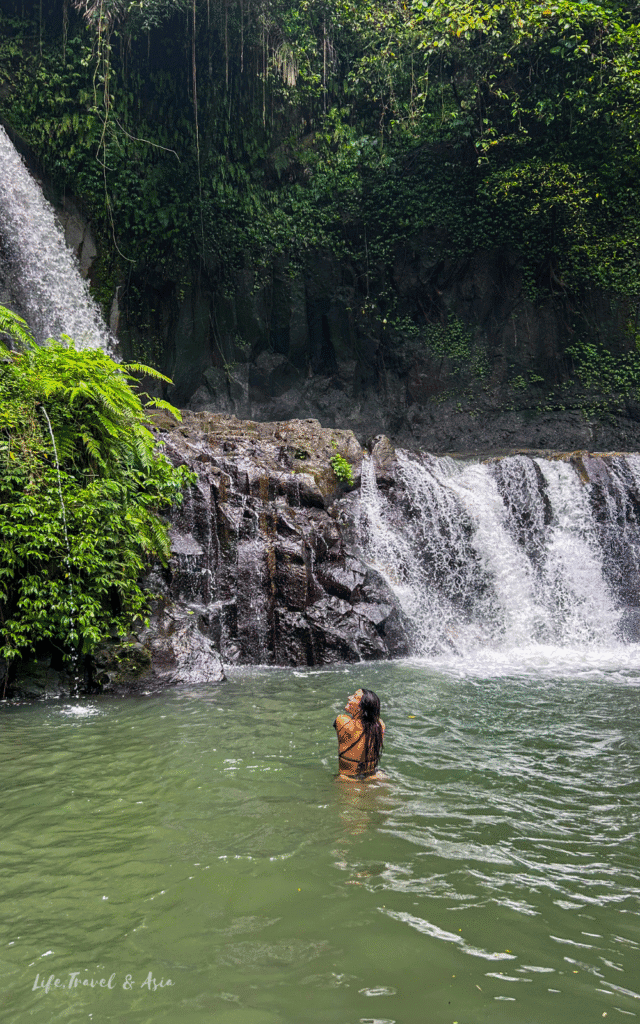
It’s a double waterfall — a narrow stream feeding into a wider horizontal fall that flows into a natural pool. Swimming here is a dream: the ground is sandy, and you don’t have to worry much about rocks.
If you want to explore more waterfalls around this area, you can read all about my half-day waterfall tour around Ubud here.
4. Lunch With Rice Field Views
To avoid the lunchtime crowds on Jalan Raya, I’d go for a meal with rice terrace views — and to me, the best area overall is the Sari Organik Walk.
This trail is such a fun one to explore: the first part is lined with shops, souvenir stalls, small art galleries, painters, cafes, and of course, plenty of Warungs.
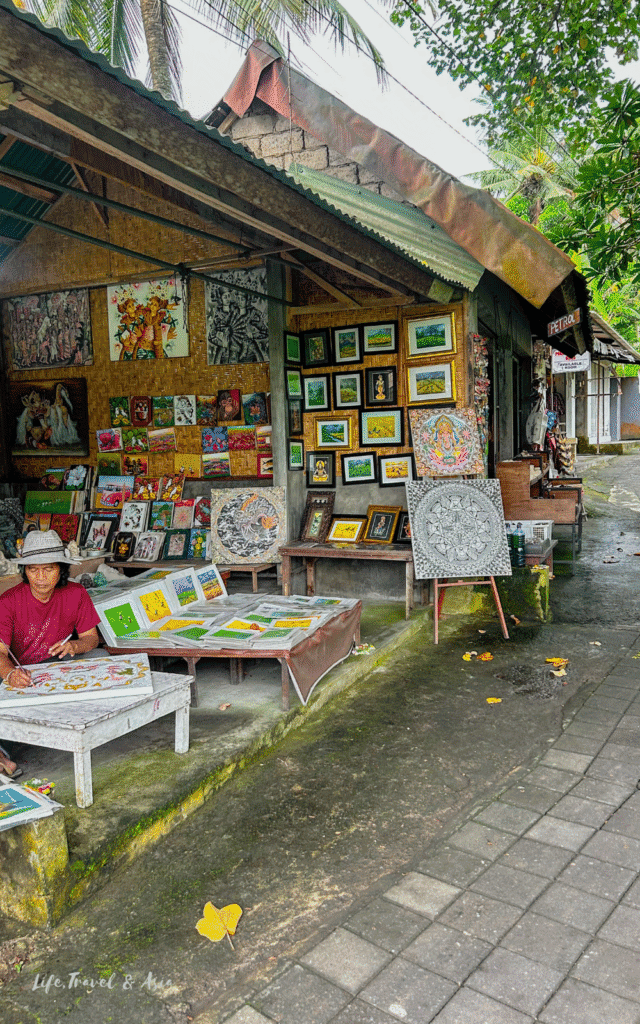
After lunch, if the sun isn’t too intense, you can continue walking towards the second half of the trail, where the rice fields open up all around you, with just a few villas and yoga studios in the distance.
Here are my favorite cafes with rice terrace views:
Monkey Bar: A tiny café/warung with the most charming garden and decor. It’s close to Nur Guesthouse (such a nice place to stay if you’re looking for enchanting rice terrace views) and perfect for lunch. I usually come here for breakfast, but I keep telling myself I need to try it for lunch — the prices are so affordable.
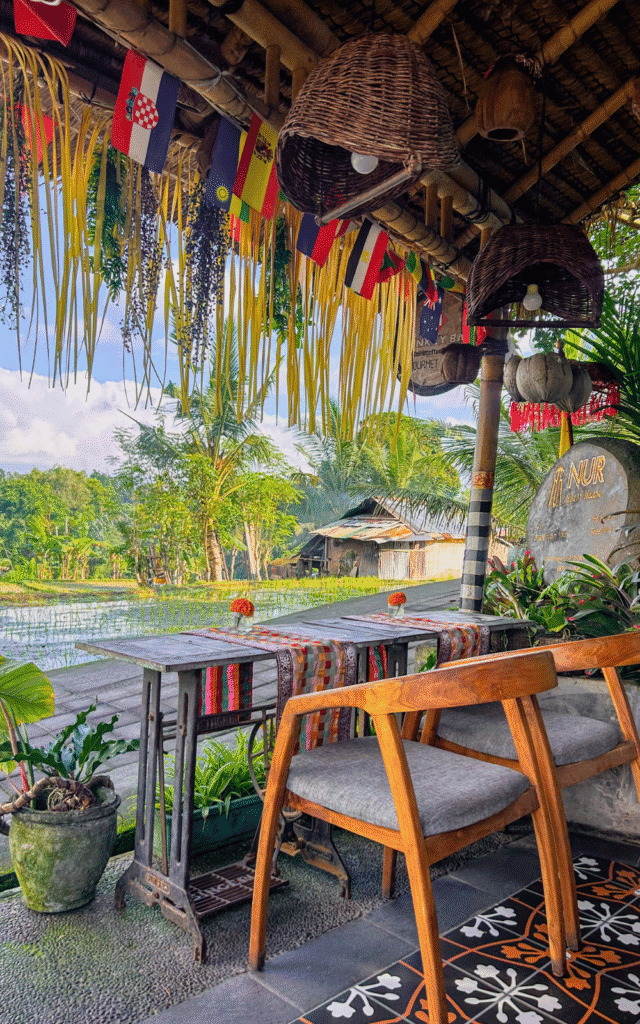
Joglo Organik – A larger warung set in an open-air wooden structure right at the end of the trail. It offers wide-open views over the rice fields and a super peaceful atmosphere. I love having breakfast here, and since it’s at the far end of the walk, it stays quiet and crowd-free even during busy hours.

Looking for more Cafes With Rice Field Views in Ubud? Here Are Top Picks!
5. Shopping at Jalan Kajeng Market
If you’re looking for some souvenirs, Jalan Kajeng Market might actually be a better choice than the busy Ubud Market.
It’s smaller, but also way less crowded. On Jalan Kajeng, the stalls are lined up along the left side of the road.
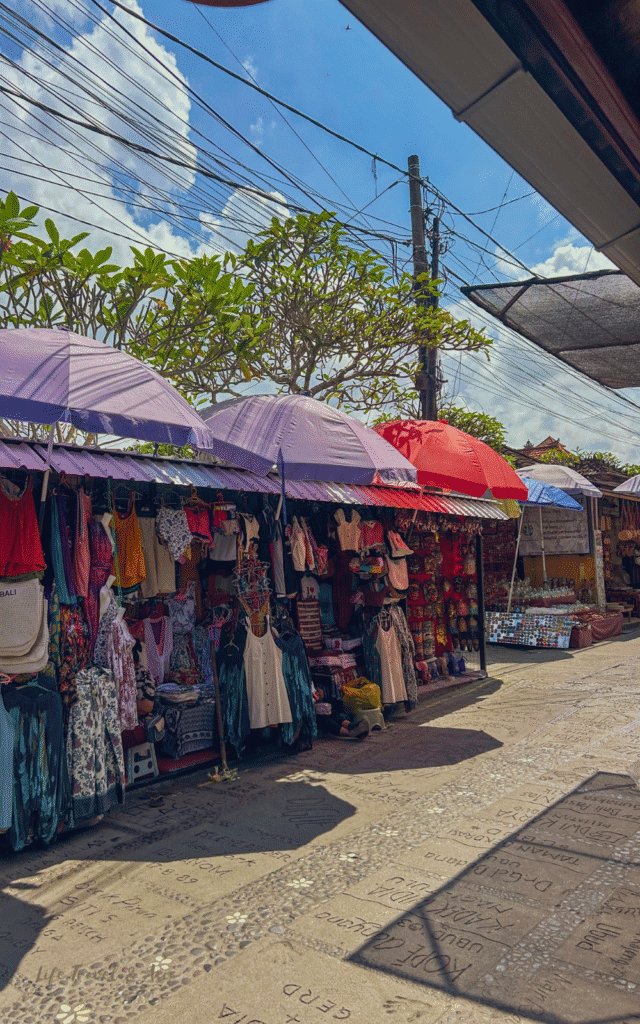
On the right you’ll find a mix of small shops — clothes, jewellery, botanicals — and a few cozy warungs where you can stop for a fresh coconut or an iced coffee.
6. Massage at Ubud Sari Health Resort
After a morning chasing temples and waterfalls, I would probably suggest my friends to get a massage.
For that, I highly recommend Ubud Sari Health Resort. It’s a wellness center right at the end of Jl. Kajeng that offers basic spa treatments, as well as detox retreats, yoga, and meditation sessions.
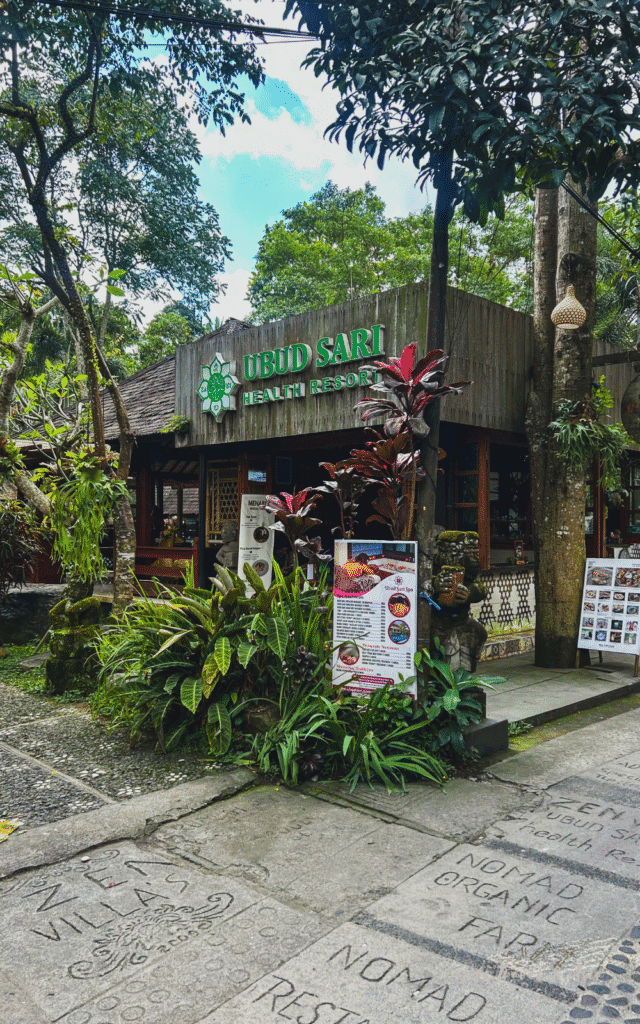
I personally went to Ubud Sari for a massage and a facial.
While you can find cheaper massages around Ubud, the expertise, care, and attention from the therapists here is truly unmatched.
And by the way, a one-hour massage is only IDR 250,000, which is still a great price.

What sets this place apart is the setting. The resort features open-air pavilions and bungalows, with the connection to the surrounding nature being an integral part of the overall experience.
If you’re curious about their treatments, I wrote a full review of Ubud Sari — to me, it’s the perfect place to enjoy high-quality spa treatments in Ubud without emptying your wallet.
7. Cocktail with a Sunset View at Sayan House
If you’re looking to catch the sunset in Ubud, there are a couple of beautiful spots worth checking out.
The first is Sayan House, a popular café and restaurant with stunning views over the Ayung River valley and the surrounding jungle.
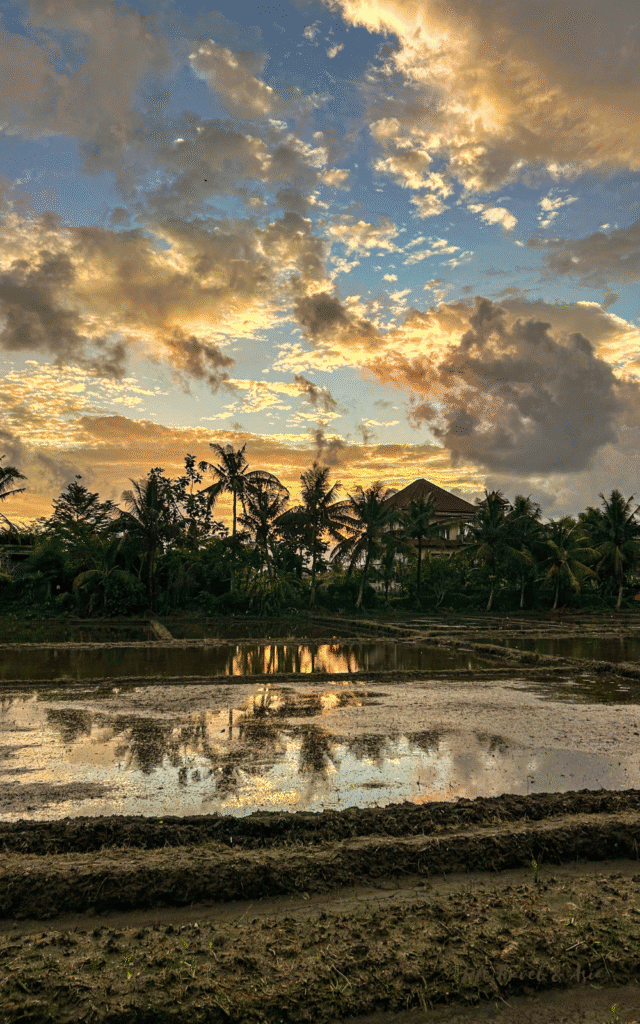
For a more luxurious experience, head to Mandapa, a Ritz-Carlton Reserve — one of the most breathtaking places to enjoy the sunset in Ubud.
At Mandapa, you can choose between dining at one of their elegant restaurants or simply grabbing a cocktail at one of their bars overlooking the valley.
How to Get to Ubud (and When to Leave)
Depending on where you’re starting from, you can book a Grab XL if your ride is around 1.5 hours, or book a private driver if you’re coming from further away.
Either way, the earlier you leave, the better. Traffic in Ubud tends to get heavy around 9 AM, so try to arrive before that if you can.
Here are average travel times from the main hubs in Bali:
From Uluwatu to Ubud: 2 hours
From Canggu to Ubud: 1 hour 30 minutes
From Seminyak to Ubud: 1 hour 45 minutes
From Sanur to Ubud: 1 hour 30 minutes
Things To Do If You Have More Than One Day in Ubud
If you have two days in Ubud, you can totally use these two one-day itineraries for your trip.
That said, I really believe that ideally you’d stay in Ubud for three or four days to fully enjoy what’s around—there’s just so much to see and do.
If you’re lucky enough to have more time, here are a few things you can add to your list.
1. Whitewater Rafting & ATV
My rafting experience in Ubud was honestly one of the most fun things I’ve done. It’s pretty tiring, so I wouldn’t recommend it on a full one-day itinerary—but if you’ve got an extra day, go for it. You won’t regret it.
I booked with Graha Adventure. It was adventurous, a bit wild, and such a cool way to be in nature and do something different.
You can book the exact same experience (+ ATV) through this link. And if you’re wondering if it’s for you, here’s my rafting review from my first trip to Bali!
2. Canang Sari & Cooking Class
One of the best ways to connect with the local culture is to actually take part in a traditional class. In Ubud, you’ll find plenty, but if I had to pick just one, I’d go for a Canang crafting and cooking class.
These two activities are at the heart of Balinese daily life: preparing food and making offerings as an expression of gratitude to the Gods.
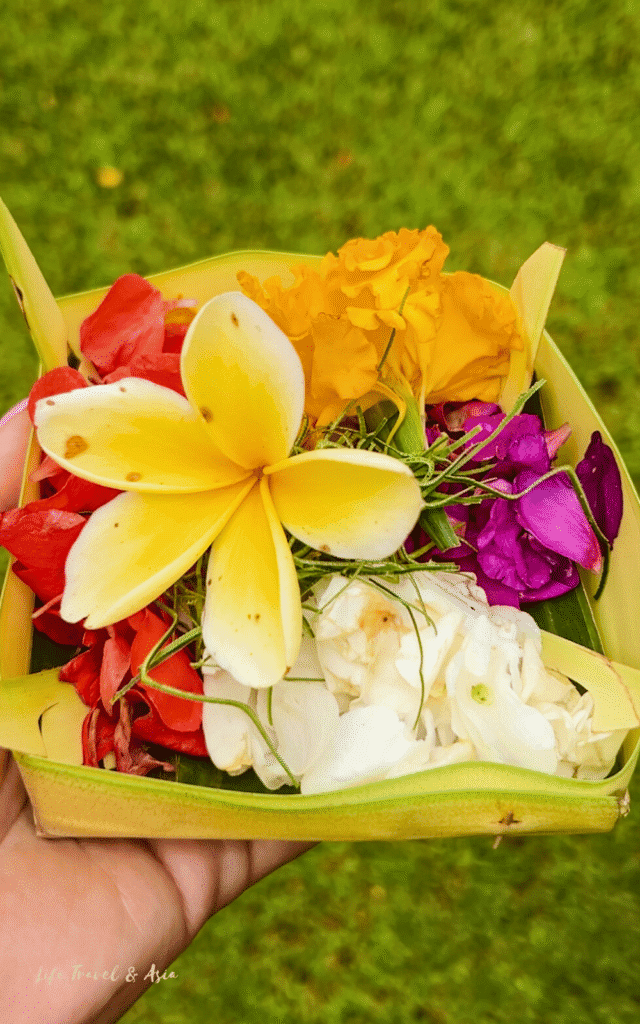
I wrote a blog post about my beautiful experience in Bongkasa, where I joined a Canang Sari and cooking class in a local village.
If you’d love to try something similar, here’s a top-rated cooking class held in a traditional village near Ubud, where you’ll visit a local market, learn all about Balinese cuisine, and the art of creating your own Canang Sari and the significance behind it.
3. Any Class At Yoga Barn
After going to The Yoga Barn a couple of times, I’d honestly recommend anyone coming to Ubud to stop by—even if it’s just for a simple mobility class.
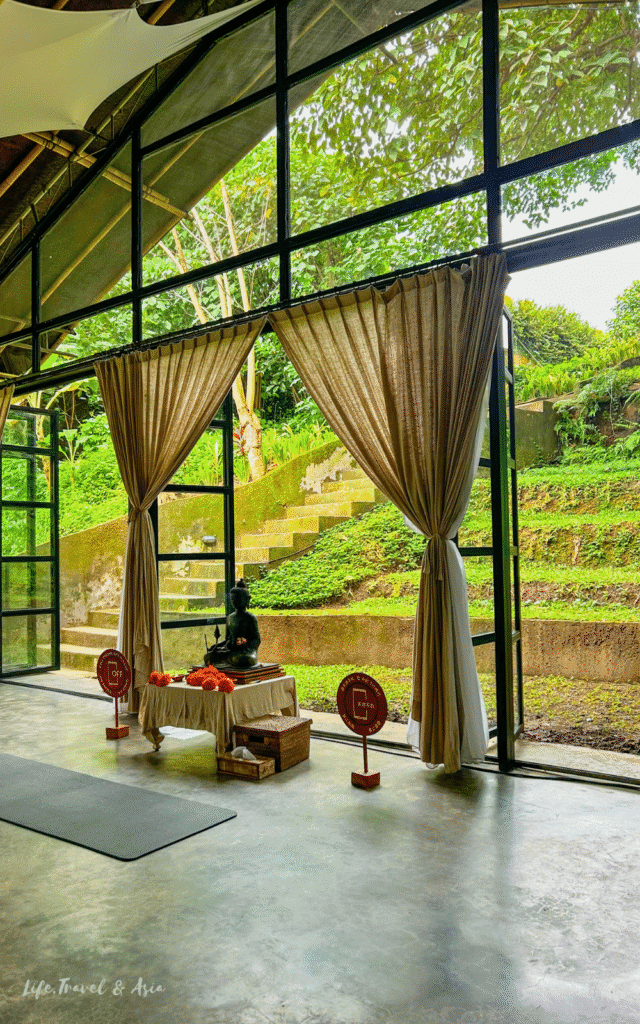
You won’t just find a yoga studio—it’s more like a park, with open-air pavilions scattered around, a Garden Café serving delicious healthy meals, and cozy corners where you can lay on pillows, rest or read. I’ve never experienced anything like it.
And the classes… even a Pilates session can feel like a spiritual journey when you’re surrounded by the sounds of nature and guided by some of the most experienced instructors I’ve ever met.
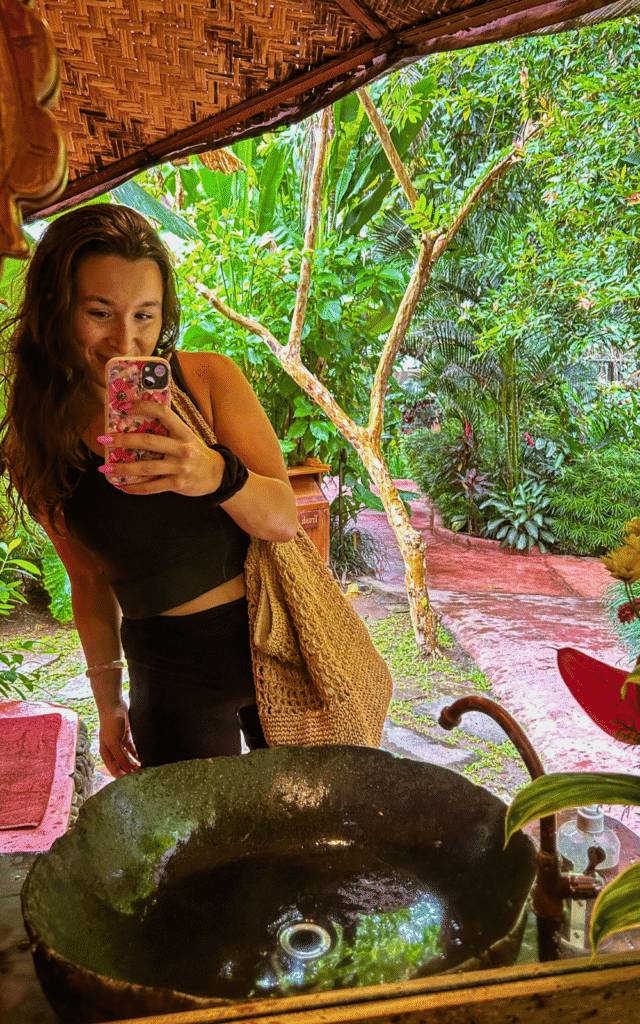
4. Hike Mount Batur
Hiking an active volcano is one of the most thrilling experiences you can have in Bali—and from Ubud, most tours to Mount Batur head to the Kintamani region.
It’s a bit of a challenge, since they usually start around 2 am so that you can reach the top for sunrise, but the view (and having breakfast at the top!) is 100% worth the early wake-up call.
If that sounds like your kind of adventure, I’d go for this tour. It’s one of the best and includes breakfast with a view.
Looking For More Things To Do? Here Are Best Things To Do & See in Ubud!
There you go! Hopefully, with these two one-day itineraries in Ubud and all the extra ideas, you’ll find fun ways to fill your days.
Of course, feel free to mix and match based on what you’re into—because even if something is a bit touristy, that doesn’t mean it’s not worth seeing.
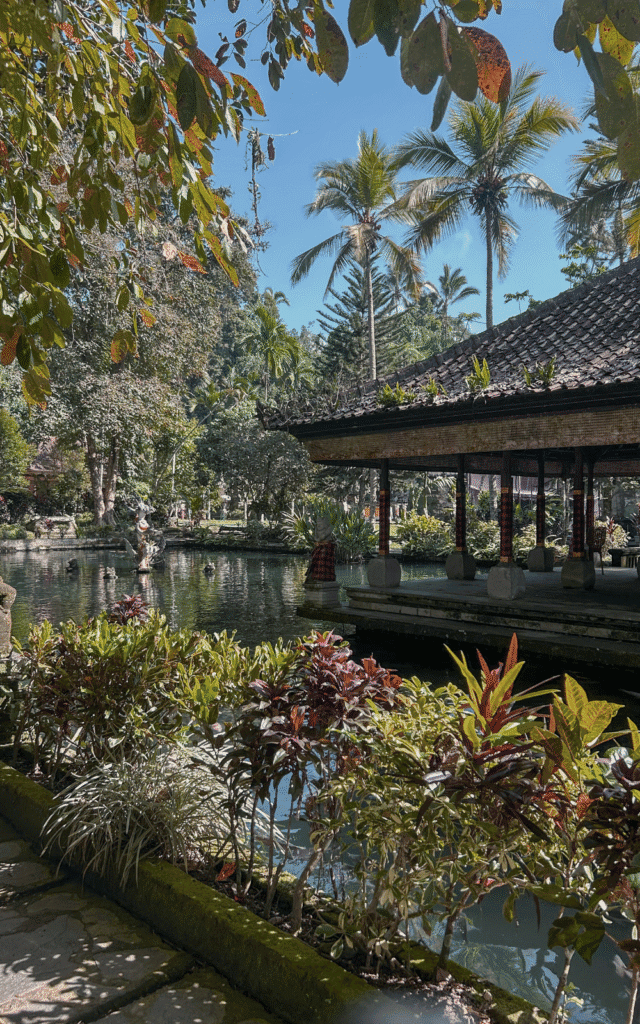
Just one recommendation: make sure to explore some of the lesser-known rice fields and off-the-beaten-path temples outside the town center.
Trust me, your first impression of Ubud will change—it’s not just traffic and crowds on the main road.
Make sure to save this post on 📌 Pinterest so you can come back to it closer to your trip.
And if you’re fascinated by Asia, its culture and spirituality, and you’re craving some slow-travel life inspiration, subscribe to my completely free email list just below.
Did you find it helpful? 📌 Save it on Pinterest!
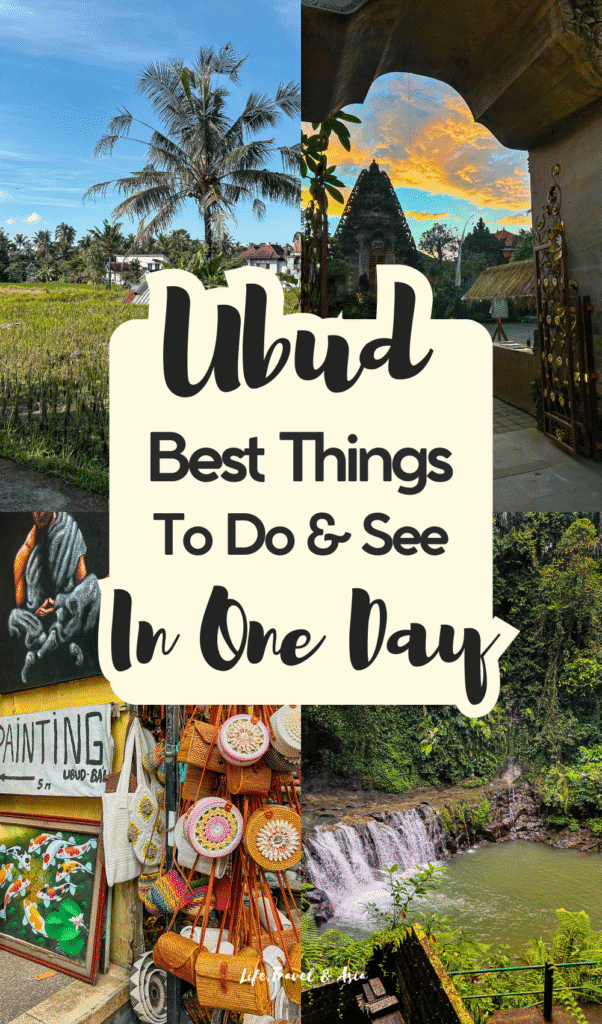
No spam, I promise. Just good energy, wellness rituals, life-design tips, and slow-travel inspiration.
That’s where I share the good (and the not-so-good) of living this kind of life—and all the lessons that Ubud, and who knows which city next, will teach me along the way.
Get My Notes From The Road
Slow travel inspiration, life-changing travel experiences, lifestyle design tips and good energy straight to your inbox. More about Notes From The Road here.

